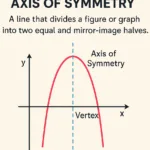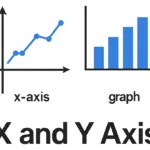Jj
🔊 US Loading... 🔊 UK Loading...The letter ‘J’ is the tenth letter in the modern English alphabet and the Latin alphabet. It is a consonant that has a unique sound and a fascinating history. The letter ‘J’ plays a significant role in linguistics, phonetics, and various languages worldwide, evolving over centuries to hold its place in the alphabet.
Origins and Evolution of the Letter ‘J’
The letter ‘J’ originated from the Latin alphabet and is closely related to the letter ‘I.’ In fact, in its early stages, ‘J’ was not considered a separate letter but rather a variant of ‘I.’ Both letters were used interchangeably in Roman times to represent both vowel and consonant sounds. Over time, the need for distinction between the vowel and consonant sounds became apparent.
In the Middle Ages, scribes began adding a small tail to the bottom of the ‘I’ to distinguish it when used as a consonant, especially in Latin words. By the 16th century, this form of ‘J’ gained recognition as a distinct letter, thanks to the efforts of Renaissance grammarians and scholars. The letter’s differentiation became standardized in modern European languages.
Phonetic Sound of ‘J’
The pronunciation of ‘J’ varies across languages. In English, ‘J’ typically represents a voiced palato-alveolar affricate sound, as in words like “jump,” “jungle,” and “joy.” However, this sound is not universal. For example:
- In French, the ‘J’ sound resembles the English ‘zh,’ as heard in “Jacques” or “bonjour.”
- In Spanish, particularly in Castilian dialects, ‘J’ is pronounced as a guttural sound similar to ‘H,’ as in “jalapeño” or “José.”
- In German, ‘J’ is often pronounced like the English ‘Y,’ as in “ja” (yes).
The versatility of the letter’s sound demonstrates its adaptability across different linguistic systems.
Usage of ‘J’ in Language
The letter ‘J’ is used extensively in modern English and other languages. Here are some of its common applications:
- Proper Nouns: Many names and places start with the letter ‘J,’ such as John, Julia, Japan, and Johannesburg.
- Common Words: Everyday words like “job,” “justice,” “journey,” and “jacket” feature the letter prominently.
- Scientific Notation: In physics and engineering, ‘J’ is often used to represent the imaginary unit in complex numbers (as an alternative to ‘i’) or to denote current density.
- Abbreviations: The letter ‘J’ is commonly used in abbreviations, such as “JR” for Junior or “J” as shorthand for Judge.
- Cultural References: In pop culture, ‘J’ is frequently associated with nicknames or characters, such as “J-Lo” (Jennifer Lopez) or “Jay” as a casual name.
Symbolism and Representation
The letter ‘J’ also carries symbolic meanings in various contexts:
- Numerology: In numerology, ‘J’ corresponds to the number 1, symbolizing leadership, ambition, and independence.
- Spiritual Meaning: Some interpret the shape of ‘J’ as a hook, symbolizing connection or the act of drawing people closer.
Conclusion
The letter ‘J’ is much more than just a part of the alphabet; it is a dynamic symbol with a rich history, diverse pronunciations, and significant cultural importance. From its evolution as a variant of ‘I’ to its modern usage across languages and disciplines, ‘J’ continues to be an essential component of communication and expression. Its unique sound and widespread application make it a fascinating subject in the study of language and linguistics.
Letter I definition and meaning
Additional Insights

Parallel Axis Theorem – Definition, Formula, Derivation & Applications

Axis of Symmetry: Definition, Equation, and Real-Life Applications

X and Y Axis: Definitions, Graphs and Examples
Coconut Spanish Translation

Cashew Spanish Translation
Axis Definition and Meaning

Walnut in Spanish Translation

Almond in Spanish – Translation and Meaning
